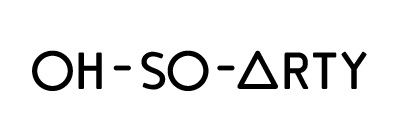*To learn more about Lisbon’s contemporary art scene and to visit Manuel Tainha’s studio, book a tour with our local art insider Kasia.
Article written by art writer and contributor Joy Bernard
Up-and-coming Portugese artist Manuel Tainha’s studio is nestled in the heart of Portugal’s capital. When the painter greets us at the entrance to the small, sun-dappled room, it is hard to believe that the close quarters tucked away in a typical Lisbonian residential building are the environs where he creates his luminous and colorful oeuvres.
But for Tainha, who recently returned to his country after a ten-month study period in the German port city of Hamburg, this modest space is just right. The artist, whose main mediums are bleach-manipulated paintings and stitch work, gestures around him at several finished works leaning casually against the walls. “All of this has been made possible,” he explains, “because I have this.” The painter points at an endearing but somewhat infantile figure with outstretched arms reaching toward the sun. “This is my first-ever work that I produced as a child. I could never make something as authentic again,” he exclaims with a laugh.
The creation, which hangs alongside several brushes and adjacent to a wall that features some of his newest experiments with thread and needle, is a modest reference to his roots. More obvious nods to his Portugese cultural heritage can be found in unconventional crafts such as small, traditional soap bars he has imbued with streaks of blue. Tainha explains that the idea of incorporating the soap in his artworks emerged when he was studying at the HFBK Fine Arts University in Hamburg under the auspices of the esteemed artist Anslem Reyele. “People use it in Portugal to clean their clothes and even shower. I like the idea that if you sell this work and it disintegrates, the collector has the recipe to make more soap,” he reveals.
No second chances
Another locally-produced and surprising material that is dominant in the artist’s work is bottled bleach. Yes, the same kind that can be found at cleaning supplies stores – except whereas the average person would use it as a disinfectant, Tainha has been using it to create tantalizing canvases. Those display fabrics in vibrant hues that are marked by amorphous, cloudy shapes he forms by tainting them with the bleach. “I use this specific type of bleach that people buy here to clean their floors because of the cultural value I try to convey in my works,” the artist says.
The substance may be more commonplace in crime scenes than in the art world, but it is exactly this stark quality which drew Tainha to it. “It started for me because I wanted to work with this idea of subtraction of color. I began doing that with sun exposure to better understand the undertones of the industrial colors I was working with, and I turned to bleach in order to accelerate that process,” he recalls.
The attraction to bleach, the artist admits, stems from its “fatal quality.” After his studies at the Faculty of Fine Arts in the University of Lisbon, he abandoned oil paintings and adopted this material “because once you stain [the work] with it you cannot change it. With oil you have the ability to come back to the same painting and amend it, and I like the idea that you don’t have second chances with your paintings.”
Tainha says that movement is a significant element that affects his process. As an example, he brings up a memory of his past as a rugby player. Showing us an image hanging by the door of an empty field where he once played, the painter says: “It look like a violent sport but it’s also subtle. The duality between tranquility and violence is something I like to explore. Think about 30 guys playing a violent sport in the middle of this peaceful field. I draw from that in my work, the aspect of movement – the memory of the movement is imprinted in it.”
Another source of inspiration that impacts the artist’s work is light. He credits Lisbon’s natural, soft light for being one of the incentives to go back to working in his homeland, where the local art scene is fast evolving. “Some of my works are really influenced by what my eyes can catch, the light falling on the pastel colors of the buildings of Lisbon. Being here has both an emotional and aesthetic value.”
Joy Bernard is a senior news editor at Israel’s leading English-language daily Haaretz. Based in Tel Aviv, she writes about politics, arts and culture in the Middle East for various publications.
*To learn more about Lisbon’s contemporary art scene and to visit Manuel Tainha’s studio, book a tour with our local art insider Kasia.
*Cover picture by Fabio Cunha for the Collectors Agenda
*All other pictures by Carl Holck and courtesy of Last Resort Gallery




